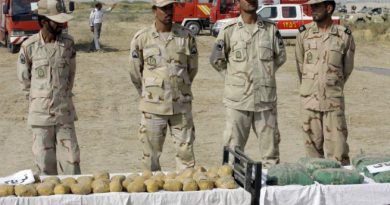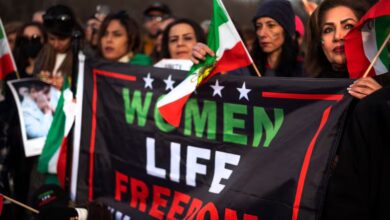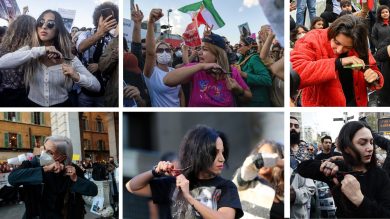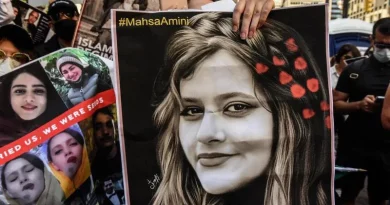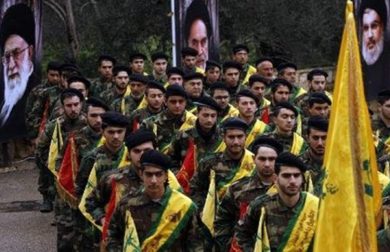In the heart of Iran’s decades-long struggle for democracy and justice, one truth has become undeniable: Iranian women are not only demanding change—they are leading it. Across cities, classrooms, courtrooms, and online platforms, women have stood on the frontlines of protest, challenged repressive laws, and defied the powerful Islamic Revolutionary Guard Corps (IRGC), often at great personal cost. Their courage and clarity have reframed the national conversation, making it impossible to envision a free Iran without women at its core.
This article explores why the future of Iran depends on women—not as passive beneficiaries of change, but as its architects and defenders.
1. A Long History of Women’s Resistance in Iran
A. Before and After the Revolution
Iranian women played a vital role in the 1979 revolution, hoping for greater rights and equality. Instead, they were met with mandatory veiling, loss of family law protections, and deep systemic discrimination. In response, they organized. Since then, Iranian women have consistently protested repressive laws, campaigned for legal reform, and remained at the center of political activism.
B. Women and the Green Movement
In 2009, during the Green Movement protests against election fraud, women were among the most visible and vocal. The image of Neda Agha-Soltan, a young woman shot dead during a demonstration, became an enduring symbol of resistance—proof that women were not just participating, they were sacrificing everything.
2. The “Women, Life, Freedom” Movement
A. Mahsa Amini and a Turning Point
The death of Mahsa (Jina) Amini in 2022, after being arrested by the morality police for “improper hijab,” was the spark that ignited nationwide protests. But more than just a moment of outrage, her death became a rallying cry: “Women, Life, Freedom.”
This movement marked a profound shift in Iran’s political landscape. Women were not just protesting for reforms—they were demanding systemic change.
B. Why This Movement Matters
• It’s intersectional, bringing together women, men, students, ethnic minorities, and laborers.
• It directly challenges the legitimacy of the regime, not just its policies.
• It centers bodily autonomy and human dignity as fundamental political issues.
3. Women vs. the IRGC: Challenging the Guardians of Oppression
A. The Role of the IRGC in Enforcing Gender Control
The IRGC and its affiliated bodies—like the Basij militia and morality police—are the enforcers of Iran’s gender apartheid system. From compulsory hijab laws to internet censorship and violent crackdowns, they are instrumental in targeting women who dissent.
But this has only made women’s resistance more potent.
B. Women as Political Prisoners
Many women have faced arrest, torture, and long prison sentences for peaceful protest. Yet from behind bars, they continue to lead.
• Narges Mohammadi, despite multiple arrests, remains a powerful advocate for human rights and recently received the Nobel Peace Prize.
• Nasrin Sotoudeh, a human rights lawyer, continues to defend women arrested for defying the hijab mandate.
Their bravery highlights how women’s leadership survives even under the harshest repression.
4. Why Iran’s Future Is Tied to Women’s Liberation
A. Gender Equality = Democratic Progress
Research around the world shows a strong correlation between gender equality and democratic governance. In Iran, women’s fight for rights is inextricably tied to broader demands for rule of law, accountability, and justice. A society that oppresses half its population can never be truly free.
B. Women Build Inclusive Movements
Iranian women bring inclusive, grassroots organizing to the forefront:
• They connect labor struggles with gender issues.
• They build bridges between ethnic minorities (like Kurdish and Baluchi communities) and the national reform movement.
• Their leadership prioritizes nonviolence, dignity, and collective empowerment.
C. Youth, Tech, and the Feminist Generation
Iran’s Generation Z, particularly young women, are among the most digitally savvy, politically aware, and bold in the country’s modern history. They use social media, encrypted messaging apps, and global networks to spread resistance and outmaneuver censorship.
This generation is not just resisting—they are reshaping Iranian culture in real-time.
5. Global Impact and Responsibility
A. The World Is Watching—and Inspired
The courage of Iranian women has sparked global solidarity. From Berlin to Buenos Aires, the chant of “Women, Life, Freedom” has been heard. Their fight has inspired new feminist energy across borders, showing that oppression anywhere is a threat to freedom everywhere.
B. What the International Community Must Do
• Support internet freedom tools to bypass censorship.
• Sanction IRGC leaders for human rights abuses.
• Provide asylum and protection for activists at risk.
• Fund grassroots women-led organizations inside and outside Iran.
• Keep women political prisoners in the global spotlight.
6. Case Studies in Courage
Masih Alinejad
A journalist in exile, Masih has used platforms like #MyStealthyFreedom to amplify the voices of Iranian women. Despite assassination and kidnapping attempts, she continues to fight for Iranian women’s autonomy.
Sepideh Gholian
Imprisoned for reporting on labor protests, Sepideh continues to speak out despite multiple arrests. Her release and re-arrest show the regime’s fear of women’s defiance.
7. What Comes Next: A Woman-Led Future
Iranian women are not just protesting a regime—they are offering a vision for a different kind of country:
• One rooted in pluralism, freedom of belief, and gender justice.
• One where civil society is strong, and leadership reflects the people.
• One where oppression is no longer enforced through gender-based laws.
Conclusion: Women Are the Future of Iran
If there is one certainty in Iran’s uncertain political future, it is this: no transformation can happen without the leadership of women. Their resistance, their resilience, and their vision are the strongest forces for change within Iran today.
Join Our Newsletter!
Stay informed with the latest updates, news, and ways to take action in the fight for justice and global security. Sign up now to get updates delivered straight to your inbox!

